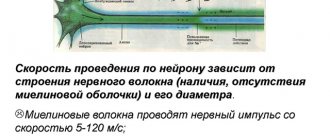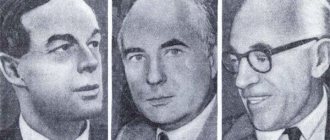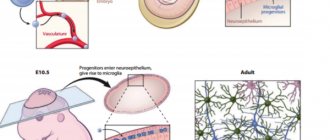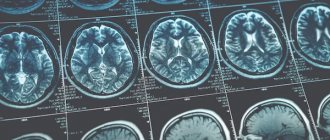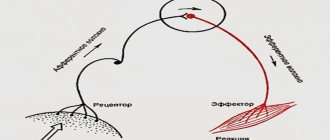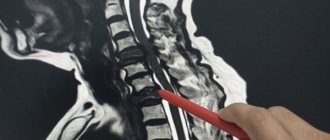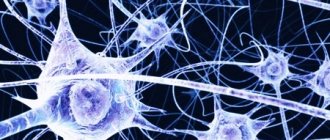Svetlana Yastrebova “Popular Mechanics” No. 6, 2018
Decades of discussions, long-established sayings, experiments on mice and sheep - but still, can the adult brain form new neurons to replace the lost ones? And if so, how? And if it can’t, why?
A cut finger will heal in a few days, a broken bone will heal. Myriads of red blood cells replace each other in short-lived generations, muscles grow under load: our body is constantly renewed. For a long time it was believed that there was only one outsider left in this celebration of rebirth: the brain. Its most important cells, neurons, are too highly specialized to divide. The number of neurons is falling year by year, and although they are so numerous that the loss of several thousand does not have a noticeable effect, the ability to recover from damage would not hurt the brain. However, scientists have not been able to detect the presence of new neurons in the mature brain for a long time. However, there were not enough sophisticated tools to find such cells and their “parents”.
The situation changed when, in 1977, Michael Kaplan and James Hinds used radioactive [3H]-thymidine, which could be incorporated into new DNA. Its chains actively synthesize dividing cells, doubling their genetic material and at the same time accumulating radioactive labels. A month after administering the drug to adult rats, the scientists obtained slices of their brains. Autoradiography showed that the marks were located in the cells of the dentate gyrus of the hippocampus. Still, they reproduce, and “adult neurogenesis” exists.
Survival Challenges
It is not enough for a nerve cell to simply be born; it must survive and acquire the functionality of mature neurons. And they die more often than you might think: almost half of the hippocampal cells produced during adult neurogenesis in rats die within a month of their appearance. In mice, losses reach 75% - but for those who lasted this period, death is no longer in danger, and by the end of it, new neurons are already fully operational. In macaques, with their larger brains, the maturation of new neurons and their integration into data processing structures takes much longer, about six months.
About Men and Mice
During this process, mature neurons do not divide, just as muscle fiber cells and red blood cells do not divide: various stem cells that retain their “naive” ability to reproduce are responsible for their formation. One of the descendants of the divided progenitor cell becomes a young specialized cell and matures into a fully functional adult state. The other daughter cell remains a stem cell: this allows the population of progenitor cells to be maintained at a constant level without sacrificing the renewal of the surrounding tissue.
Neuronal precursor cells were found in the dentate gyrus of the hippocampus. Later they were found in other parts of the rodent brain, in the olfactory bulb and the subcortical structure of the striatum. From here, young neurons can migrate to the desired area of the brain, mature in place, and integrate into existing communication systems. To do this, the new cell proves its usefulness to its neighbors: its ability to excite is increased, so that even a weak impact causes the neuron to produce a whole volley of electrical impulses. The more active a cell is, the more connections it forms with its neighbors and the faster these connections stabilize.
Adult neurogenesis in humans was confirmed only a couple of decades later with the help of similar radioactive nucleotides - in the same dentate gyrus of the hippocampus, and then in the striatum. Our olfactory bulb, apparently, is not renewed. However, how active this process is and how it changes over time is not exactly clear today.
For example, a 2013 study showed that until old age, approximately 1.75% of cells in the dentate gyrus of the hippocampus are renewed each year. And in 2018, results emerged showing that the formation of neurons here stops already in adolescence. The first measured the accumulation of radioactive tracers, and the second used dyes that selectively bind to young neurons. It is difficult to say which conclusions are closer to the truth: it is difficult to compare rare results obtained by completely different methods, and even more so to extrapolate work done on mice to humans.
The first studies of neurogenesis were carried out on planarian flatworms, and the first vertebrate models were axolotls. Today, experiments most often take place with zebrafish and laboratory rodents
Non-drug ways to deal with a nervous breakdown
- Sports activities. Sports exercises will help you calm down and recharge yourself with positivity. This method has not harmed more than one patient. Sport improves heart function, brain function, and sleep.
- Relaxation programs: meditation, yoga, body massage. Relieve tension, relax the body, get rid of negative thoughts. Do it at least 2 times a week.
- Maintaining a healthy lifestyle. No matter how strange it may sound, it helps. Alcohol, drugs, coffee - all this affects the nervous system.
- Proper nutrition, essential vitamins.
Model problems
Most studies of adult neurogenesis are conducted in laboratory animals, which reproduce quickly and are easy to maintain. This combination of characteristics is found in those who are small in size and live very short lives - mice and rats. But in our brains, which only finish maturing by age 20, things can happen completely differently.
The dentate gyrus of the hippocampus is part of the cerebral cortex, albeit a primitive one. In our species, like in other long-living mammals, the cortex is noticeably more developed than in rodents. Perhaps neurogenesis covers its entire volume, being realized by some of its own mechanisms. There is no direct evidence of this yet: studies of adult neurogenesis in the cerebral cortex have not been performed either in humans or in other primates.
But such work has been carried out with ungulates. A study of sections of the brain of newborn lambs, as well as slightly older sheep and sexually mature individuals, did not find dividing cells - the precursors of neurons in the cerebral cortex and subcortical structures of their brains. On the other hand, in the cortex of even older animals, young neurons that were already born but immature were found. Most likely, they are ready to complete specialization at the right moment, forming full-fledged nerve cells and taking the place of the dead. Of course, this is not exactly neurogenesis, because new cells are not formed during this process. However, it is interesting that such young neurons are present in those areas of the sheep brain that in humans are responsible for thinking (cerebral cortex), integration of sensory signals and consciousness (claustrum), and emotions (amygdala). There is a high probability that we will also find immature nerve cells in similar structures. But why might an adult, already trained and experienced brain need them?
Memory hypothesis
The number of neurons is so large that some of them can be safely sacrificed. However, if a cell has switched off from working processes, this does not mean that it has died. The neuron may stop generating signals and responding to external stimuli. The information he has accumulated does not disappear, but is “canned.” This phenomenon has led Carol Barnes, a neuroscientist at the University of Arizona, to theorize that this is how the brain stores and shares memories from different periods of life. According to Professor Barnes, from time to time a group of young neurons appears in the dentate gyrus of the hippocampus to record new experiences. After some time - weeks, months, and maybe years - they all go into a state of rest and no longer send signals. This is why memory (with rare exceptions) does not retain anything that happened to us before the third year of life: access to this data is blocked at some point.
Considering that the dentate gyrus, like the hippocampus as a whole, is responsible for transferring information from short-term memory to long-term memory, this hypothesis even seems logical. However, it still needs to be proven that the adult hippocampus actually produces new neurons, and in fairly large numbers. There is only a very limited set of possibilities for conducting experiments.
Consequences
The emotional state has a direct connection with the physical state. If a nervous breakdown has been detected, symptoms begin to appear: problems with the heart, problems with the digestive system, dizziness. A breakdown may begin in a patient who has attempted to commit suicide.
If the problem is not diagnosed, it begins to accumulate like a snow globe. The patient begins to have communication problems, becomes more hot-tempered, irritable, and his psychological state worsens.
A breakdown leads to drug addiction or taking excessive amounts of alcohol, and promiscuous sexual relations. The search begins for a method of discharge, getting rid of all the negativity that has accumulated in the form of an internal factor. It is necessary to get help from a psychotherapist in time.
Stress story
Typically, human brain specimens are obtained during autopsy or neurosurgery, such as for temporal lobe epilepsy, where seizures are not treatable with drugs. Both options do not allow us to trace how the intensity of adult neurogenesis affects brain function and behavior.
Such experiments were carried out on rodents: the formation of new neurons was suppressed by targeted gamma radiation or by turning off the corresponding genes. This exposure increased the animals' susceptibility to depression. Mice incapable of neurogenesis were almost not happy about sweetened water and quickly gave up trying to stay afloat in a water-filled container. The content of cortisol, the stress hormone, in their blood was even higher than in mice stressed by conventional methods. They were more likely to become dependent on cocaine and had poorer recovery from stroke.
One important note worth making about these results: it is possible that the shown connection “fewer new neurons - a sharper reaction to stress” closes on itself. Unpleasant life events reduce the intensity of adult neurogenesis, which makes the animal more sensitive to stress, so the rate of formation of neurons in the brain decreases - and so on in a circle.
How to protect yourself from breakdown
The most important thing is to correctly identify the disease and begin treatment for the breakdown from any side. Unfortunately, many people accept the appearance of irritability, insomnia, bad mood and a number of other factors as a phenomenon with which absolutely everyone lives. Therefore, you should not contact a neurologist. But that's not true! It is important for your loved ones to be there at this moment when it is difficult to survive everything! Experts require that treatment be started as early as possible.
Stress is not a normal condition and must be treated! Don’t be afraid to disturb the doctor with your trivial questions - sleep disorders, mental disorders, tearfulness, forgetfulness, memory impairment, dizziness, and more. These are all points that can be resolved at the formation stage. But if you do not pay attention to them, then you can wait for clinical depression, which can only be gotten rid of with the strongest drugs, the use of certain tranquilizers.
Business on nerves
Despite the lack of accurate information about adult neurogenesis, businessmen have already appeared who are ready to build a profitable business on it. Since the early 2010s, a company that sells water from springs in the Canadian Rockies has been producing Neurogenesis Happy Water
.
It is claimed that the drink stimulates the formation of neurons due to the lithium salts it contains. Lithium is indeed considered a drug beneficial for the brain, although there is much more of it in tablets than in “happy water”. The effect of the miracle drink was tested by neuroscientists from the University of British Columbia. They gave rats “happy water” for 16 days, and a control group - plain water from the tap, and then examined slices of the dentate gyrus of their hippocampus. And although the rodents that drank Neurogenesis Happy Water
had as much as 12% more new neurons, their total number was small and there is no statistically significant advantage.
For now, we can only state that adult neurogenesis clearly exists in the brain of representatives of our species. Perhaps it continues until old age, or maybe only until adolescence. It's actually not that important. What is more interesting is that the birth of nerve cells in the mature human brain generally occurs: from the skin or from the intestines, the renewal of which occurs constantly and intensively; the main organ of our body differs quantitatively, but not qualitatively. And when the information about adult neurogenesis forms a coherent, detailed picture, we will understand how to translate this quantity into quality, forcing the brain to “repair”, restore the functioning of memory, emotions - everything that we call our life.
Restoration of the nervous system after a long course of treatment
In order to consolidate the therapeutic effect, you need to completely reconsider your lifestyle. Particular attention should be paid to nutrition, making sure that the diet contains plenty of fruits, fiber and carbohydrates. In addition, take vitamins regularly after consulting your doctor. Pay attention to reducing the amount of coffee and tea you drink, replacing it with juice. Eliminate bad habits from your life. If a person plays sports every day, then his health will be much better. If possible, go on vacation.



